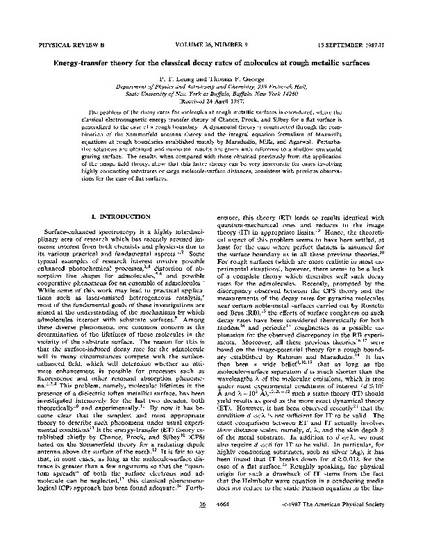
- Molecular dynamics,
- Molecules -- Decay,
- Nanostructured materials
The problem of the decay rates for molecules at rough metallic surfaces is considered, where the classical electromagnetic energy-transfer theory of Chance, Prock, and Silbey for a flat surface is generalized to the case of a rough boundary. A dynamical theory is constructed through the combination of the Sommerfeld antenna theory and the integral equation formalism of Maxwell's equations at rough boundaries established mainly by Maradudin, Mills, and Agarwal. Perturbative solutions are obtained and numerical results are given with reference to a shallow sinusoidal grating surface. The results, when compared with those obtained previously from the application of the image field theory, show that this latter theory can be very inaccurate for cases involving highly conducting substrates or large molecule-surface distances, consistent with previous observations for the case of flat surfaces.

This is the publisher's final pdf. Article appears in Physical Review B (http://prb.aps.org/) and is copyrighted by APS Journals (http://publish.aps.org/).